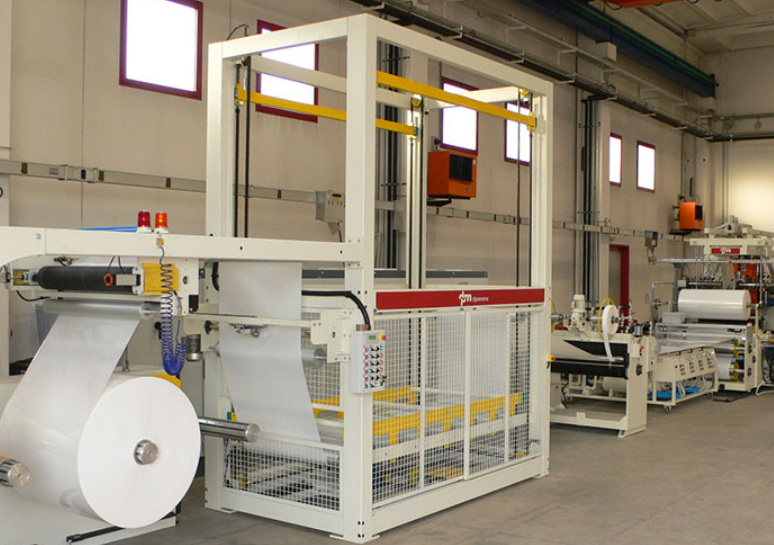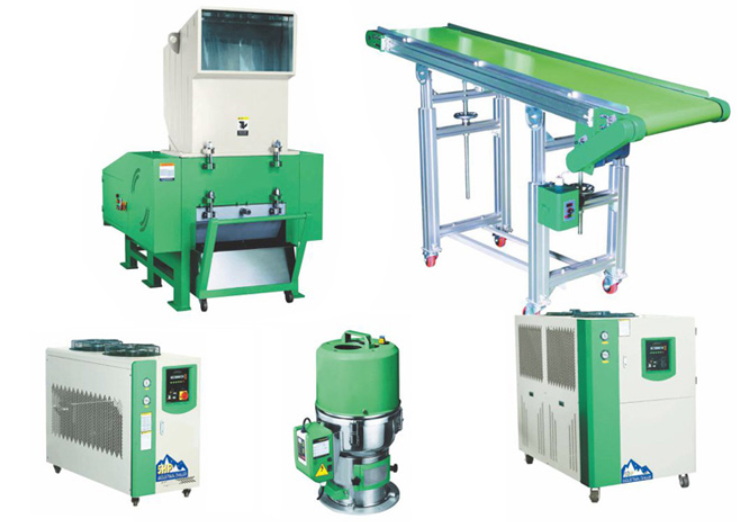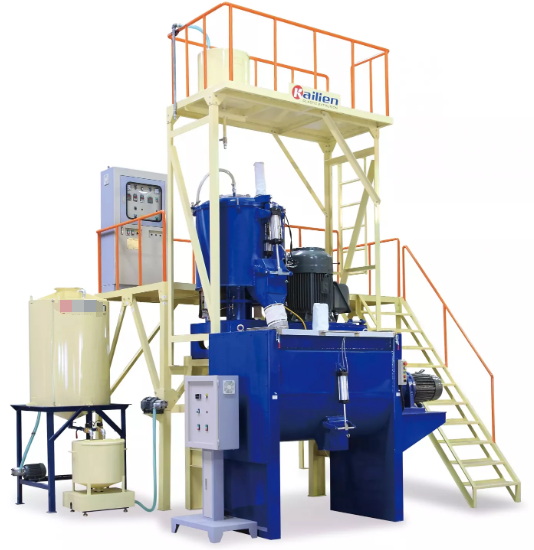Content Menu
● Understanding Plastic Sheet Extrusion Machinery
>> Key Components of Plastic Sheet Extrusion Machinery
● Common Materials Processed by Plastic Sheet Extrusion Machinery
>> Polyethylene (PE)
>> Polypropylene (PP)
>> Polyvinyl Chloride (PVC)
>> Polystyrene (PS)
>> Polycarbonate (PC)
>> Polyethylene Terephthalate (PET)
>> Acrylonitrile Butadiene Styrene (ABS)
>> Nylon (Polyamide)
>> Acrylic (Polymethyl Methacrylate, PMMA)
● Specialized and Composite Materials
● The Plastic Sheet Extrusion Process: Step by Step
● Industries and Applications
>> Packaging Industry
>> Construction Industry
>> Automotive Industry
>> Furniture Industry
>> Electronics and Appliances
>> Medical and Pharmaceutical
>> Advertising and Signage
● Advantages of Plastic Sheet Extrusion Machinery
● Challenges and Considerations
● Conclusion
● Frequently Asked Questions (FAQ)
>> 1. What are the most commonly used materials in plastic sheet extrusion machinery?
>> 2. Can recycled plastics be used in plastic sheet extrusion machinery?
>> 3. How does material choice affect the properties of extruded plastic sheets?
>> 4. What industries benefit most from plastic sheet extrusion machinery?
>> 5. What are the main maintenance tasks for plastic sheet extrusion machinery?
● Citations:
Plastic sheet extrusion machinery is a cornerstone of the modern plastics industry, enabling the efficient production of flat, continuous plastic sheets used in countless applications. These machines transform raw thermoplastic materials into sheets with precise thickness, width, and material properties, fueling innovation in packaging, construction, automotive, electronics, and more. The versatility of plastic sheet extrusion machinery lies in its ability to process a wide variety of polymers, each offering unique characteristics suited to specific end uses[1][2][5]. This article explores the materials compatible with plastic sheet extrusion machinery, their properties, the extrusion process, and the industries that benefit from this transformative technology.

Understanding Plastic Sheet Extrusion Machinery
Plastic sheet extrusion machinery operates on a straightforward yet highly controlled process. Raw plastic materials—typically in the form of pellets, granules, or powders—are fed into an extruder, where they are melted, homogenized, and forced through a flat die to form a continuous sheet. The sheet is then cooled, shaped, and cut to the desired dimensions[1][5][8].
Key Components of Plastic Sheet Extrusion Machinery
- Extruder: The heart of the system, consisting of a barrel, a rotating screw, and a heating system. It melts and mixes the plastic, conveying it towards the die[1][5][10].
- Die: Shapes the molten plastic into a flat sheet, determining its width and thickness.
- Cooling and Shaping Unit: Uses rollers, air, or water to cool and flatten the sheet, ensuring dimensional stability.
- Calendaring and Post-Processing Equipment: Refines surface finish, thickness, and may add patterns or textures.
- Winding or Cutting Systems: Collects the finished sheet in rolls or cuts it into specific lengths for further processing or distribution[1][10].
Common Materials Processed by Plastic Sheet Extrusion Machinery
The adaptability of plastic sheet extrusion machinery allows for the processing of a broad spectrum of thermoplastics. Each material brings distinct mechanical, thermal, and optical properties, making them suitable for specific applications[2][5][8][10].
Polyethylene (PE)
Polyethylene is one of the most widely used plastics in sheet extrusion. It comes in several forms, including High-Density Polyethylene (HDPE) and Low-Density Polyethylene (LDPE).
- Properties:
- Density: 0.91–0.96 g/cm³
- Melting Temperature: 120–130°C
- Highly flexible, excellent chemical resistance, low moisture absorption[2][5][8].
- Applications: Packaging films, liners, industrial sheets, and consumer goods.
Polypropylene (PP)
Polypropylene is valued for its balance of strength, flexibility, and chemical resistance.
- Properties:
- Density: 0.90–0.92 g/cm³
- Melting Temperature: 160–170°C
- High stiffness, good fatigue resistance, and heat resistance[2][5][6][8].
- Applications: Automotive parts, food containers, medical components, and hollow sheets.
Polyvinyl Chloride (PVC)
PVC is a versatile thermoplastic with excellent durability and flame retardancy.
- Properties:
- Density: 1.30–1.45 g/cm³
- Processing Temperature: 160–200°C
- High chemical resistance, weatherability, and flame retardancy[2][5][8].
- Applications: Construction materials (wall cladding, flooring), signage, protective sheets, and furniture components.
Polystyrene (PS)
Polystyrene offers rigidity and optical clarity, making it ideal for packaging and display applications.
- Properties:
- Density: 1.04–1.07 g/cm³
- Glass Transition Temperature: ~100°C
- High rigidity, ease of molding, and good clarity[2][5][8].
- Applications: Disposable packaging, trays, and consumer products.
Polycarbonate (PC)
Polycarbonate is known for its impact strength and optical transparency.
- Properties:
- Density: 1.20 g/cm³
- Melting Temperature: 225–230°C
- Exceptional impact resistance, high optical clarity, and thermal stability[2][5][8].
- Applications: Safety glazing, electronics, automotive parts, and optical media.
Polyethylene Terephthalate (PET)
PET is widely used for its strength, transparency, and recyclability.
- Properties:
- Good mechanical strength, chemical resistance, and clarity.
- Suitable for food contact and packaging applications[5][7][8][10].
- Applications: Food packaging, pharmaceutical packaging, and thermoformed containers.
Acrylonitrile Butadiene Styrene (ABS)
ABS combines strength, toughness, and ease of processing.
- Properties:
- High impact resistance, good dimensional stability, and surface finish[6][8].
- Applications: Appliance housings, automotive trim, refrigerator liners, and 3D printing sheets.
Nylon (Polyamide)
Nylon is used for its toughness and resistance to abrasion.
- Properties:
- High mechanical strength, wear resistance, and chemical stability[6].
- Applications: Engineering sheets, gears, and industrial components.
Acrylic (Polymethyl Methacrylate, PMMA)
Acrylic is valued for its optical clarity and weather resistance.
- Properties:
- High transparency, UV stability, and good mechanical properties[6].
- Applications: Display panels, signage, and protective barriers.

Specialized and Composite Materials
Plastic sheet extrusion machinery can also process blends, composites, and co-extruded multilayer sheets to achieve specific performance requirements.
- Co-extrusion: Allows for the combination of different polymers in layered sheets, providing enhanced barrier properties, UV resistance, or tailored mechanical characteristics[5].
- Additives: Colorants, UV stabilizers, flame retardants, and fillers can be incorporated to modify material properties for specialized applications[2][5].
The Plastic Sheet Extrusion Process: Step by Step
1. Feeding: Raw plastic material (pellets, granules, or powder) is loaded into the hopper.
2. Melting and Mixing: The material is conveyed through the heated barrel by a rotating screw, melting it into a homogeneous mass.
3. Extrusion: The molten plastic is forced through a flat die, forming a continuous sheet.
4. Cooling and Shaping: The sheet passes through cooling rollers or air/water cooling systems, solidifying and flattening it.
5. Calendaring and Finishing: Additional rollers may refine the surface finish and thickness uniformity.
6. Cutting or Winding: The finished sheet is cut to length or wound onto rolls for storage and transport[1][5][8][10].
Industries and Applications
Plastic sheet extrusion machinery supports a vast array of industries, thanks to its ability to process diverse materials and produce sheets with tailored properties.
Packaging Industry
- Production of blister packs, food wrappers, and flexible packaging materials.
- Sheets can be laminated with other materials for enhanced barrier properties[3][9].
Construction Industry
- Manufacturing of roofing sheets, wall cladding, insulation boards, and flooring underlayment.
- Use of materials like polycarbonate and PVC for impact resistance and weatherability[5][9].
Automotive Industry
- Interior and exterior components, including panels, trims, and liners.
- Sheets offer a combination of strength, flexibility, and lightweight properties[3][5][9].
Furniture Industry
- Table tops, cabinet doors, drawer fronts, and decorative panels.
- Ability to produce sheets with various textures, colors, and finishes[9].
Electronics and Appliances
- Housings, protective covers, and insulation components.
- Use of materials like ABS, polycarbonate, and polystyrene for electrical and mechanical performance[3][8].
Medical and Pharmaceutical
- Production of sterile packaging, trays, and device components.
- Use of medical-grade plastics with compliance to regulatory standards[3][7].
Advertising and Signage
- Display panels, billboards, and light diffusers.
- Preference for materials with high optical clarity and printability, such as acrylic and polycarbonate[5][8].
Advantages of Plastic Sheet Extrusion Machinery
- Material Versatility: Capable of processing a wide range of thermoplastics and blends[1][2][10].
- Customization: Allows for precise control over sheet thickness, width, and surface properties.
- Efficiency: High-speed, continuous production with minimal material waste[5][10].
- Sustainability: Supports the use of recycled materials and reduces waste through efficient processing.
- Automation: Modern machines offer automated control for consistent quality and reduced labor costs[10].
Challenges and Considerations
- Material Selection: The choice of polymer must match the intended application's mechanical, thermal, and regulatory requirements[2][5][8].
- Process Optimization: Temperature, pressure, and cooling rates must be carefully controlled to ensure sheet quality.
- Maintenance: Regular inspection and maintenance of machinery components are essential for reliable operation and product consistency[7].
Conclusion
Plastic sheet extrusion machinery stands as a vital enabler of modern manufacturing, offering unmatched versatility in processing a wide array of thermoplastic materials. From everyday packaging to high-performance engineering components, the ability to tailor sheet properties through material selection and process control makes extrusion technology indispensable across industries. As material science and extrusion technology continue to evolve, the range of processable materials and the scope of applications will only expand, ensuring that plastic sheet extrusion machinery remains at the forefront of industrial innovation.

Frequently Asked Questions (FAQ)
1. What are the most commonly used materials in plastic sheet extrusion machinery?
The most commonly processed materials include Polyethylene (PE), Polypropylene (PP), Polyvinyl Chloride (PVC), Polystyrene (PS), Polycarbonate (PC), and Polyethylene Terephthalate (PET). Each offers unique properties such as flexibility, chemical resistance, impact strength, and optical clarity, making them suitable for different applications[2][5][8][10].
2. Can recycled plastics be used in plastic sheet extrusion machinery?
Yes, many plastic sheet extrusion machines can process recycled plastics, especially materials like PET and PE. The use of recycled content supports sustainability and reduces production costs, provided the recycled material meets quality standards for cleanliness and consistency[8][10].
3. How does material choice affect the properties of extruded plastic sheets?
Material selection directly impacts the mechanical strength, flexibility, thermal resistance, optical clarity, and chemical stability of the final sheet. For example, polycarbonate sheets offer high impact resistance, while PVC sheets provide excellent weatherability and flame retardancy[2][5][8].
4. What industries benefit most from plastic sheet extrusion machinery?
Key industries include packaging, construction, automotive, furniture, electronics, medical, and advertising. Each industry leverages specific materials and sheet properties to meet regulatory, functional, and aesthetic requirements[3][5][9].
5. What are the main maintenance tasks for plastic sheet extrusion machinery?
Regular maintenance includes inspecting drive components, checking hydraulic and electrical systems, cleaning equipment, inspecting and replacing worn molds, lubricating moving parts, and ensuring proper storage. Preventive maintenance ensures optimal performance, longevity, and consistent product quality[7].
Citations:
[1] https://www.cnchaoxu.com/news-center/plastic-sheet-extrusion-machine-a-key-equipment-in-the-plastics-industry
[2] https://jieyatwinscrew.com/blog/everything-you-need-to-know-about-plastic-sheet-extrusion/
[3] https://www.clarkrandp.com/6-common-applications-of-plastic-extrusion/
[4] https://www.won-plus.com/blog/extrusion-technology-related-questions-and-answers_b40
[5] https://www.kuhne-mb.de/en/landing-pages/sheet-extrusion
[6] https://www.moldingmachinetepai.com/resources/plastic-extrusion-machines-introduction-types-application.html
[7] https://tz-machinery.com/sheet-extruder-applications-and-maintenance-guide/
[8] https://www.technicmachines.com/sheet-extruder-machine-line/
[9] https://www.cnchaoxu.com/news-center/what-is-sheet-extrusion-machine
[10] https://www.yjing-extrusion.com/what-are-the-benefits-of-using-an-automatic-plastic-sheet-extrusion-machine.html
[11] https://www.cowellextrusion.com/everything-you-need-to-know-about-sheet-extrusion-a-comprehensive-guide/
[12] https://plasticextrusiontech.net/machines-used-in-the-plastic-extrusion-process/
[13] https://www.sunwellglobal.com.tw/en/product/Plastic-Sheet-Extrusion-Lines.html
[14] https://www.jwellmachine.com/what-types-of-plastic-materials-can-be-processed-using-chinese-extrusion-machines/
[15] https://diamat.com/technology/plate-production/
[16] https://www.arlingtonmachinery.com/plastic-extruder/pl.c.1047.0/sheet-extrusion-lines/
[17] https://www.alibaba.com/showroom/plastic-sheet-extrusion-machine.html
[18] https://www.cnchaoxu.com/news-center/what-are-the-different-types-of-plastic-extrusion-machines
[19] http://www.industrialextrusionmachinery.com/plastic_extrusion.html
[20] https://www.friendplasticmachine.com/sale-13111581-laboratory-type-material-testing-mini-plastic-sheet-extruder.html
[21] https://www.plastikcity.co.uk/blog/what-is-plastic-extrusion/
[22] https://jydjx.com/effective-maintenance-strategies-for-plastic-extrusion-machines/
[23] https://www.accextrusion.com/news/operating-plastic-profile-extrusion-machines/
[24] https://epackagingsolution.com/5-plastic-extrusion-machine-products-and-how-they-are-made/
[25] https://www.cnchaoxu.com/news-center/how-to-choose-a-good-plastic-sheet-extruder-machine
[26] https://en.wikipedia.org/wiki/Plastic_extrusion
[27] https://paulmurphyplastics.com/industry-news-blog/3-tips-you-should-consider-when-choosing-a-plastic-extrusion-machine/
[28] https://www.moldingmachinetepai.com/resources/plastic-extrusion-machines-introduction-types-application.html






















